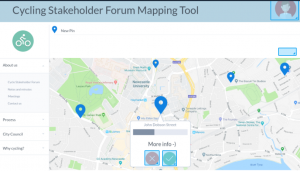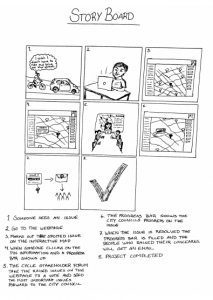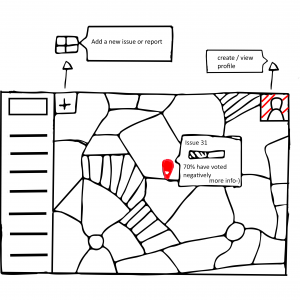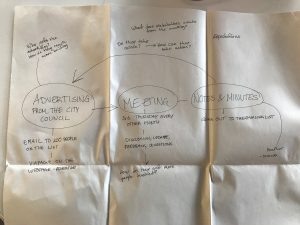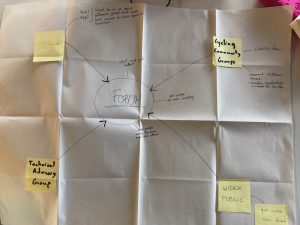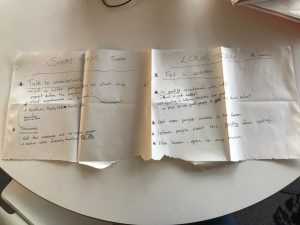Cycle stakeholder forum week 10
During these 10 past weeks we’ve been working on this design project. It’s been challenging in many ways, such as working in a group and finding the time to work on the project, because as it turned out it takes a lot of time discussing, sketching and compromising to get to where we’re at today. The stakeholder interviews were very important in the design process since that’s where we got to interact with them and get a clearer picture about how they would like the product to work and what their expectations were. It is important to take the time to do all these things, even though it’s hard sometimes, in order to develop the prototype. After having our final meetings with Heather and Mark this week to show them the prototype, we learned that even though we put all this time into the design there is still some factors in the design that is hard to understand/get around. This showed us how important it is to have regular meetings with the stakeholders during the design process in order to get the design as good and easy to understand as possible.
Digital civics for us is about discovering ways in which we can use technologies to promote individuals participation in services, such as our projects with the Newcastle Cycle Stakeholder Forum.During this process we’ve been attempting to find digital solutions to a complex problem but doing so in a way that does not over complicate the already existing problems in the forum.
If we had an extended timeframe in this project we would begin by having more in depth stakeholder meetings with a wider range of stakeholders in order to really pinpoint and discover other key issues in the cycle stakeholder forum. This would then allow uss to add more detail to our prototype and add new features to it so that its a much better example of how our website would work and how users would interact with it, which currently our prototype does not accurately represent many of our websites features. Parallel to this we would run more user interviews with our stakeholders to make sure our site is interesting, clear and easy to navigate. if we had more time we would also focus on developing the prototype to a higher standard, so that it operates in a much more realistic way, like allowing our users to place pins on the map and be able to play around with the website’s features in a more interactive way.
